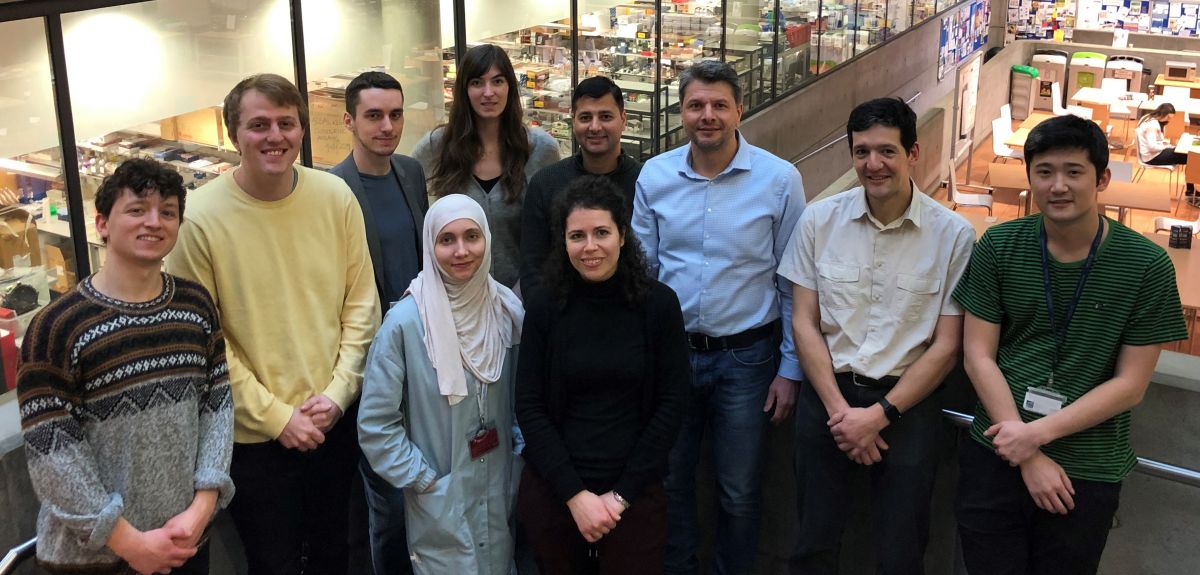
Oxford scientists in ground-breaking cancer and MND discovery
Oxford scientists have discovered a key underlying cause of a range of serious conditions including cancers and Motor Neurone Disease (MND). It's important because if you know why something happens, you can try to do something about it and you are a lot closer to fixing it. So it was overwhelming when Professor Kristijan Ramadan and his team at Oxford's Department of Oncology discovered that a naturally-occurring, but faulty, ‘protein plough’ is linked to a range of very serious conditions.
Professor Ramadan explains that, if the body is working properly, proteins swoop in to repair lesions or damage to the DNA. Lesions can occur because of drinking, smoking, during illness or because of medicines.
Professor Ramadan’s work gives hope that it will be possible to identify patients for whom the usual treatment is not going to work – enabling them to be given an alternative without waiting.
‘They occur all the time – and can be caused just through breathing Oxygen,’ says Professor Ramadan. But, what his team discovered is that a protein called Topoisomerase 1, which comes in to repair damage to the DNA, can become toxic, if it sticks, in a covalent attachment, to the DNA.
In simple terms, he says, the body has its own little ‘protein plough’ which should remove proteins before they become a problem. In more complex terms, specialised DNA repair machinery composed of the p97 ATPase, 'protein plough' SPRTN protease and an autophagy receptor TEX264, should tackle the linked protein-DNA toxic product.
Although an essential part of the body’s repair system, the protein must be transitory only. According to Professor Ramadan, if it remains on the surface of the DNA for too long, it can become entangled, difficult to remove, and potentially toxic. Problems arise, he says, if the body’s natural plough does not clear away the protein – or if it clears away proteins too rapidly, before they have a chance to repair the lesion.
The implications are potentially immense. Pathological accumulation of the protein, also known as Topoisomerase 1-cleavage complexes, is linked both to neurodegeneration and cancer. Faulty ‘protein ploughs’ can cause or undermine treatment for cancers and lead to debilitating conditions such as Motor Neurone Disease, and even to premature ageing.
In the case of some cancers, Professor Ramadan says, a super-functional ‘protein plough’ can undermine chemotherapy treatment, by clearing it away from the DNA before it can be effective. Chemotherapy prevents cancer cells replicating. If it is cleared away, by an over-zealous plough, the cancer treatment will be ineffective and there is much greater possibility of metastases. In the early days of treatment, critical months can be lost on failed treatments and by then, the cancer can already have spread. Professor Ramadan’s work gives hope that it will be possible to identify patients for whom the usual treatment is not going to work – enabling them to be given an alternative without waiting. And it offers the possibility of identifying people prone to particular conditions, before they become ill, allowing potentially preventative treatment.
In terms of MND and early-onset hepatocellular carcinoma, according to Professor Ramadan, in some cases these conditions are caused by an under-active ‘plough’ repair system, which could be recognised by targeted DNA testing. If a ‘protein plough’ fails to clear away the protein, which then sticks to the DNA, it can become very difficult to remove – potentially leading to cancer and MND.
Now that this key factor has been identified, it offers the possibility of inhibitors being developed, which will prevent an over-active plough clearing away life-saving treatment. And it holds out the prospect for an under-active plough, to be repaired. The discovery has caused considerable consternation in the scientific community, because the work has implications for so many serious conditions.
Professor Ramadan's team was approached by the doctors of a 13-year old child, who was ageing prematurely, aware that the team was working in this area. At the lab in Oxford, they were able to ascertain that the patient’s condition was caused in this way.
Professor Ramadan's team was approached by the doctors of a 13-year old child, who was ageing prematurely, aware that the team was working in this area. At the lab in Oxford, they were able to ascertain that the patient’s condition was caused in this way. This work was done a few years back. Now, the team has discovered TEX264 protein, an additional component of the specialised DNA repair mechanism for the removal of toxic DNA-protein complexes. TEX264 specifically governs the plough protein (SPRTN) to toxic DNA-protein lesions known as Topoisomerase 1-cleavage complexes. In this way, TEX264 and SPRTN (plough) work in concern to prevent genomic instability that could be associated with some types of cancer or NMD.
Awareness of the problem is one thing, using the knowledge to treat patients is another. Although it is possible to test for a fault with the body’s mechanism, identifying potential problems before they happen, it will be some time before inhibitors can be developed and become part of treatment. A considerable injection of funds, running into tens of millions of pounds, will be needed before treatments to repair faulty ploughs or overcome the issue are patient-ready.